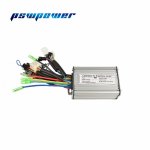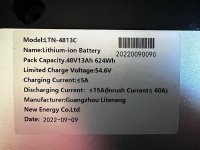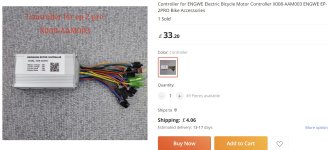Slippy One
1 mW
I just want more amps for better hill climbing.
Nothing looks like plug and play. Most controllers on Aliexpress look semi homemade and some look downright dangerous. Grin Franken/Baserunners look ideal in size and spec but I'd also have to replace screen and probably PAS or throttle, and I'm not a fan of DIY tinkering for days with such an expensive product with poor support. Grin say their stuff works with certain displays, others say no, so much conflicting advice.
What would an experienced DIY builder do? Replace everything except the motor to make sure it all works, including rear/brake lights? (kitchen sink approach)
My bike is called Engwe EP-2 Pro and is a cheap copy of a Mate-X bike with folding frame with 20" wheels and a generic 9pin clone 750w motor. Controller is a custom 48v with 17a current. Bike is great on flats, awful on any hill, even smallish ones.
I'm looking for at least a 35a controller to help climb hills better, I would assume the max amps would be for the hills, and drop down again when cruising to help battery range..
Also, apart from weird rattles at lower speeds, is there anything wrong with square wave signals compared to sine?
No idea where to start or if I should even bother at all. There's thousands to choose from..
Nothing looks like plug and play. Most controllers on Aliexpress look semi homemade and some look downright dangerous. Grin Franken/Baserunners look ideal in size and spec but I'd also have to replace screen and probably PAS or throttle, and I'm not a fan of DIY tinkering for days with such an expensive product with poor support. Grin say their stuff works with certain displays, others say no, so much conflicting advice.
What would an experienced DIY builder do? Replace everything except the motor to make sure it all works, including rear/brake lights? (kitchen sink approach)
My bike is called Engwe EP-2 Pro and is a cheap copy of a Mate-X bike with folding frame with 20" wheels and a generic 9pin clone 750w motor. Controller is a custom 48v with 17a current. Bike is great on flats, awful on any hill, even smallish ones.
I'm looking for at least a 35a controller to help climb hills better, I would assume the max amps would be for the hills, and drop down again when cruising to help battery range..
Also, apart from weird rattles at lower speeds, is there anything wrong with square wave signals compared to sine?
No idea where to start or if I should even bother at all. There's thousands to choose from..





